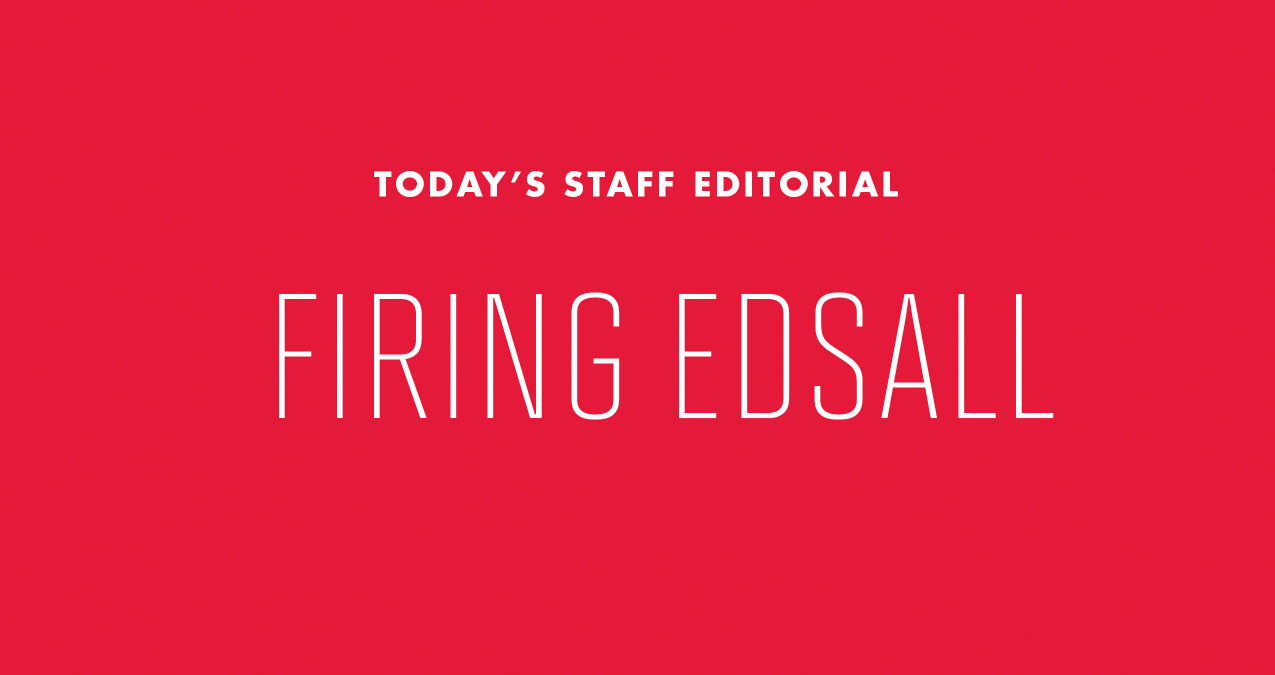It was hard to miss the writing on the wall, especially when it came in the form of a 21-point blowout loss at home to a mid-major. Or a 39-point blowout loss in the Terrapins football team’s only real rivalry game, or a 28-point shutout in the squad’s second Big Ten opener or a stand-up-and-take-notice challenge on the road against No. 1 Ohio State that careened into a classic Terps implosion.
By that point, of course, coach Randy Edsall had blocked half of this state’s Twitter users and you’d have been hard-pressed to get anything but radio silence out of the university’s athletic department on his future with the program.
Edsall had compiled a .393 winning percentage through five seasons, landing him smack in the middle of 13 coaches in modern Terps history. His conference record, a dismal 10-24 overall, flirted with .500 all last season and nearly surpassed it before — you guessed it — another classic Terps implosion in the regular-season finale against Rutgers.
By a number of measures, the man was excruciatingly average. By the discourse surrounding the Terps this season, he had lost his clout in the locker room, become a laughingstock in postgame interviews, bungled the team’s shot at viability in the Big Ten — in short, proved himself a pox on the sport.
So with bye week looming and an impressive 2016 recruiting class waiting in the wings, Edsall went down without so much as a phone call from the athletic department in the hours after reports of his imminent firing surfaced.
The move marked a noteworthy about-face from the athletic department, which in June had handed Edsall a three-year extension worth $7.5 million.
“Randy has made good strides in our first year in the Big Ten and our program is headed in the right direction,” Athletic Director Kevin Anderson said after announcing the deal.
During the 103 days after that endorsement, then, something spooked the athletic department enough to cut Edsall loose and toss another few million dollars into its already-yawning debt.
Let’s get real: It wasn’t the loss to No. 12 Michigan, which is currently laying waste to the Big Ten’s East Division under Jim Harbaugh. It wasn’t because the Terps tanked late against the top-ranked Buckeyes, either. The university knew it couldn’t compete in that weight class when it fled the ACC, and one year hasn’t changed things.
The real nail in the coffin? Edsall had lost favor with big-dollar university donors, a fall from grace that only accelerated after the Bowling Green debacle.
“Well, if one pays attention to what is said in the media, at least in the blogs, there are always those who support or oppose any particular coach,” university President Wallace Loh said when asked about donors’ roles in the decision. “I certainly pay attention to everything people say.”
A waffle of an answer from a man who’s taken brunchtime visits from a host of potential donors in his Byrd Stadium box.
It’s as good an indictment as any of the sway big money holds over college athletics. Anderson’s decision to can Edsall before his contract’s $500,000 buyout clause kicks in should leave other stakeholders quizzical. There’s also no small absurdity in promoting a journeyman assistant with a 2-26 head coaching record under his belt, especially during the middle of the season.
We’ve seen the positive side of financing, what with private donors’ partial backing of $155 million in Cole Field House renovations and the widening flow of Big Ten television revenue.
Sunday, though, the athletic department threw more than $2.6 million down the drain and a wrench into its slow climb back to profitability, and for what? Hopefully Anderson knows, because this editorial board doesn’t.



